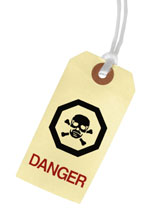Game Genres and Violence
What does it mean for a game to be violent? Would Pac-Man eating the pastel-colored ghosts be violent? Or does there need to be a realistic representation of humans attacking other humans for the game to be considered violent? In Super Mario Brothers, one could argue that violence happens when one squashes a mushroom, though to a gamer such an argument would be inane.
The goal of games is to get us to think about rules and goals. The messages in the game are up to the player to buy into or not.

However, one very important question remains: Do games need to contain violence to be fun?
Most certainly not. In fact, some of the best games out there, such as The Sims, Sim City, or Sid Meier’s Civilization, are highly entertaining with little to no violent content.
Semiotic Domains and Violence
The issue of semiotic domains plays a central role in the debate of violence in games. Compare the following two sentences:
- In Pac-Man, when Pac-Man eats a power pill, he can turn the table on the ghosts and chase them to get points.
- In Pac-Man, eating the power pill gives the player the ability to turn around and destroy the defenseless ghosts.
While the action depicted is the same, the context given to the sentence defines the meaning that the conveyed action will have. More importantly, perhaps, anything anyone can say in a debate is a function of what Mikhail Bakhtin calls heteroglossia, or multivoicedness of discourse (Heteroglossia, 2007).
Multivoicedness of discourse means we never come up with completely fresh or new ideas out of the blue as speakers. Rather, we represent ideas that have been passed along from person-to-person and group-to-group through the years, and the interpretation depends upon the semiotic domain within which conversation happens.
